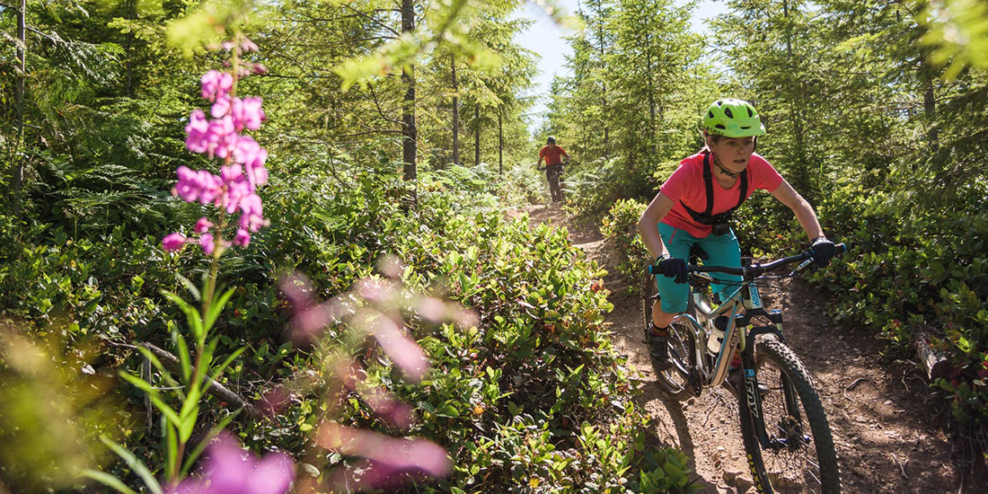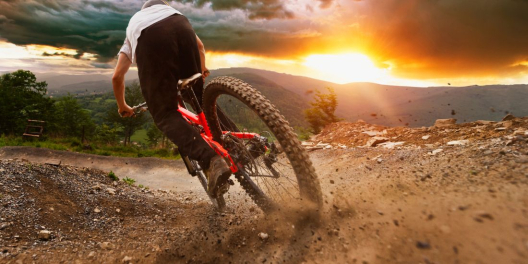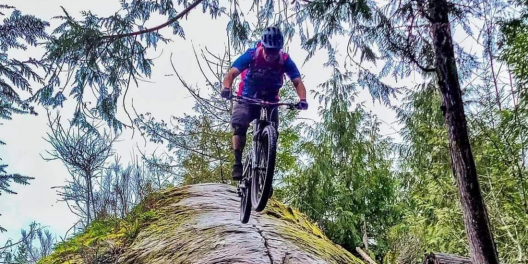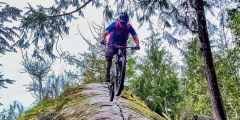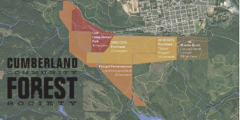Cumberland has one of the busiest trail networks in North America. In 2020, an automatic counter at the trailhead clocked more than 170,000 visits from bikers, runners, and walkers. It’s popular and getting more popular every year.
United Riders of Cumberland (UROC,) a non-profit society, manages a network of 185 trails that just keeps growing. Most of these trails were built and maintained by dedicated volunteers over the past 20 years. It’s hard work, but folks love their sport and being outdoors.
Much of the trail network is on private land. That land is owned by Hancock Timber Resource Group (now Manulife Investment Management) and Island Timberlands (now Mosaic Forest Management). The Village of Cumberland also owns the 60-hectare Cumberland Community Forest, which is the gateway to the trail network.
For a long time, these private companies just accepted the trails. They didn’t interfere. But the trails weren’t official.
In 2015, UROC signed a land-use agreement that made the trails official. It was an important milestone. The agreement mostly handled the question of liability—basically, who would be responsible if someone hurt themselves on the trail.
That agreement let Cumberland market mountain biking as a tourist attraction, and made it possible for UROC to apply for funding and grants to support more trail projects.
This past March, UROC president Evan Loveless and executive director Dougal Browne went to Cumberland Council to give the village an update on the network. The last time UROC presented to Council it had 721 members. Today it has nearly 2,100.
“The appetite for trail use is increasing,” Browne told Council.
But there have been some growing pains. The hikers and bikers don’t always get along. There are also issues around proper trail protocol, erosion, and the ecological impact of having all those folks out in the woods.
Browne said UROC’s 5-year strategic plan will focus on smoothing out relationships between different trail users before they become a problem.
They will also continue maintaining and enhancing the trails in partnership with more than 60 trail builders. That includes fixing “pinch points,” or areas with lots of traffic. They’ll also connect the trails better to help spread riders, runners, and walkers throughout the network.
Browne also said that they are considering how climate change and extreme weather events will impact the trails.
“We’re not going to build more trails for the sake of building trails,” Browne told Council. “We’re very aware of the change in the climate. We’re not really sure what’s happening tomorrow, but we’ve definitely seen what happened yesterday.”

